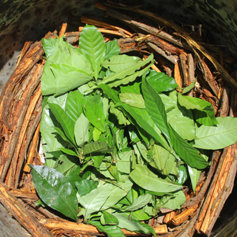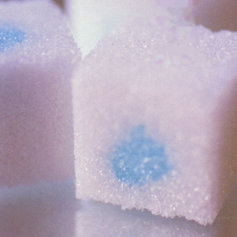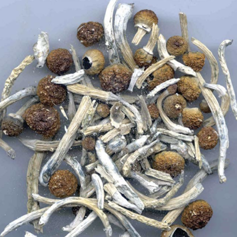Brace Yourself: A Tsunami of Psychedelic Drug Use May Be Coming

Parents, educators, and employers should be alert to the next wave of drug legalization and utilization. Psychedelics are poised to become decriminalized, legalized, and utilized in medical treatment in the very near future. As these drugs enter into a new phase of legal or at least decriminalized use, it is quite possible that youth will be attracted to these drugs, and they will be increasingly found in homes, schools, and businesses across the country.
There’s always been a trickle of interest and research into the use of therapeutic psychedelics. But in 2023, any search of this subject on the internet finds a massive flood of research, studies, and media coverage of this topic. This heightened interest may foretell a tsunami of psychedelic use that will sweep through our communities. It would be wise to prepare for such an inundation.
What Are Psychedelics?
A psychedelic is a drug that causes hallucinations and an apparent change of consciousness or awareness. This category includes both plant-based and synthetic substances. What they have in common is similar effects on the mind and use by people who think these substances may offer some benefit.
The following drugs are commonly included in the category of psychedelics. Some of them are also hallucinogens. Each drug has different physical and mental effects.

- Ayahuasca: This is a mixture of different plant substances found in South America. Once consumed, one of the mix’s components—the drug DMT (dimethyltryptamine)—has a profound effect on the mind. These mixed components are normally made into a strong-tasting drink.
- DMT: This drug can be found on the illicit market as a crystalline substance refined from plant materials. It has long been classified as a controlled substance, which means it is not legal to possess or sell.
- Ibogaine: Ibogaine is also plant-based, coming from the West African iboga shrub. It is a stimulant and hallucinogen. The bark may be ground into a powder or made into a drink.
- Ketamine: This is an anesthetic used in veterinary medicine. When humans use this drug, it is a dissociative anesthetic, meaning that a person will often lose connection with their own identity or reality. It also has some hallucinogenic effects. It may be diverted from vet clinics as an injectable liquid. It can also be found as small pills or white powder.

Image courtesy of DEA.gov
- LSD: A widely known and used drug in the late 1960s, LSD was popular for its strong hallucinogenic effects. Colors, lights, and time are often greatly distorted, along with one’s perceptions of their own body. It is often found as small pieces of paper or sugar cubes saturated with the drug, as a liquid, or as small tablets.
- MDMA (3,4-methylenedioxymethamphetamine, nicknamed ecstasy): While MDMA has some hallucinogenic effects, it is also a stimulant and artificially generates feelings of closeness to other people. It is a very popular drug at parties, dance clubs, and music festivals. It’s often sold as small colored pills or in liquid form.
- Mescaline: Mescaline comes from the peyote cactus found in Mexico and the American Southwest. Small buttons from the cactus are eaten to produce hallucinations and distortions of time, space, color, and one’s body.
- NBOMes: There are three different synthetic drugs in this group: 25I-NBOMe, 25C-NBOMe, and 25B-NBOMe. They are dangerous hallucinogens that may be sold as LSD. They are found as powders, liquids, or blotter squares.

- PCP: A synthetic drug named phencyclidine, it may be encountered as a tablet, capsule, colored powder, or liquid. It is a strong and dangerous drug that causes feelings of detachment, a sense of invulnerability, and hallucinations.
- Psilocybin (magic mushrooms): These mushrooms metabolize into psilocyn, the hallucinogenic component. The mushrooms may be eaten or brewed into a bitter-tasting tea.
- Salvia: This herb in the mint family can be chewed, smoked, or vaped. Its effects include short periods of hallucination, paranoia, and disconnection from reality.
Massive Media Coverage … and Amnesia
At one time, there was an effort to discourage the use of these drugs because of their harmful and even life-threatening effects. The tide has turned, and it is very likely that we will see and hear an overwhelming wave of enthusiastic articles in magazines and on television shows and the internet.
But in the search for uses of these drugs, are we forgetting the harm that can result? The late 1960s were a brutal lesson in how these drugs—new to the market at that time—can injure both minds and bodies.
As investors clamor to claim a profitable position in this new market, they seem to have developed amnesia regarding the catastrophes that can result from the use of these drugs. Along with them, researchers, writers, editors, and directors are poised to produce glowing documentaries, articles, and studies—all overlooking the possible harm.
Silicon Valley and Psychedelics
The technology industry centered in Silicon Valley has been a party to the increasing interest in these drugs. In an attempt to expand their mental abilities to help them create a radically different future, these workers have turned to psychedelics such as LSD and psilocybin.

This independent, often self-guided use is part of a biohacking trend: measures intended to get more out of both the body and the mind. This effort to increase creativity and success may drive some people to overlook the problems associated with every one of these drugs—some of which can be permanent.
At a recent conference in Washington, D.C., one of the speakers warned the audience about a coming “tsunami” of psychedelic use that could appear in workplaces. Employers may need to be prepared for the use of this drug by their employees who wish to biohack their own abilities. In a similar way, students, artists, musicians, and others may be inclined to adopt these measures.
As journalists hop on the bandwagon, trying to attract eyes to their articles, we may see thousands more enthusiastic stories about psychedelics. Investors eager to reap profits from all this interest are likely to finance more positive coverage. Whether there are injuries or deaths from these drugs will be a topic for a much later day.
Legalization is Already in Place
Two states and several cities have already legalized or decriminalized the use of some of the drugs on this list. Denver, Colorado, and the State of Oregon were first on the list; twenty-five other states have considered similar legislation. Drugs included in these bills were psilocybin, MDMA, LSD, ibogaine, peyote, ayahuasca, and DMT. States that have thus far approved some version of legalization include Connecticut, Hawaii, New Jersey, Texas, and Washington. Cities that have taken this step include Ann Arbor, Michigan; Oakland, California; Detroit, and Seattle.
A Close Look at the Forgotten Harms
Most every drug on the illicit market has qualities that some would consider valuable or pleasant. But the risk and the short-term or long-term harm of any drug must always be considered. A person looking for a thrill, excitement, or artificially induced enhancement is likely to neglect this due diligence. That neglect has already resulted in permanently impaired minds, damaged neurological systems and organs, serious injuries, and even death in far too many cases.

Here is a sampling of the harms that have resulted from these highly touted psychedelics.
- Ayahuasca: Some people may suffer psychotic episodes. Calls to Poison Control Centers reported hallucinations, agitation, cardiac or respiratory arrest, and fatalities.
- DMT: A person high on DMT may be unable to make rational judgments, which can lead to injury. Panic attacks and amnesia are also common. The person’s muscles may tighten to the point of muscle breakdown. Psychotic effects are possible. Coma and respiratory arrest have resulted.
- Ibogaine: The active ingredients in ibogaine accumulate in the fat tissues of the body, which can lead to cardiotoxicity. Several deaths have been linked to this effect. Hallucinations may last more than 24 hours.
- Ketamine: While this drug can cause hallucinations, it can also detach a person from their own identity. Some people experience delirium, delusions, and confusion. Aggressive behavior, muscle rigidity, and amnesia can also result. It is possible to fatally overdose on ketamine.
- LSD: This strong psychedelic can cause terrifying and stressful mental and psychological effects. The hallucinations can overwhelm a person and cause them to take irrational actions that result in injury to themselves or others. These effects can even last days or weeks and can recur months or even years later. Some people become psychologically addicted to the drug, depending on it to alter their perceptions of the world.
- MDMA: Possible effects include confusion, anxiety, depression, paranoia, and addiction. Overheating can occur from its stimulant effects, which can cause organ breakdown and death.
- Mescaline: A mescaline experience can turn terrifying because of the hallucinations and changes in perception. A person may feel out of control and harm themselves or someone else.
- NBOMes: Very small quantities of this kind of drug have caused seizures, cardiac and respiratory arrest, and death. The hallucinogenic effects of this drug have resulted in violent deaths.
- PCP: Catatonic states similar to those seen in schizophrenia may result. Repeated use can result in poor memory, impaired thinking, slurred speech, addiction, depression, suicidal thoughts, and social withdrawal. Some people have become aggressive or suffered paranoid psychotic episodes on this drug, causing injury or even death. High doses can cause coma or death.
- Psilocybin: Inability to differentiate imagined realities from reality and panic and psychosis are possible. Overdose may cause death.
- Salvia: Effects include a short, manic, and hallucinogenic state. The user may only have partial control of their body movements or may run around uncontrollably.
Self-Medicating Dangers

It is dangerous to start self-dosing with any drug, but self-dosing with psychedelics is especially dangerous. The effects can be completely different from one person to the next, or from one day to the next.
One of the risks is developing a tolerance, meaning that after the drug has been taken for a while, higher dosages are needed to get the effect a person desires. Higher dosages means more risk of serious physical or mental harm and the possibility of addiction. Some people may use these drugs despite the risk of psychotic episodes that could have lasting repercussions.
There are many health situations that could make it unsafe to consume psychedelics, such as heart disease or pregnancy. There is also the possibility that any pill, powder, or liquid can be contaminated with fentanyl, methamphetamine, PCP, heroin, or harmful impurities.[9]
An Important Message to Our Youth
When once-illicit drugs are legalized (as with cannabis) or legal drugs are in bountiful supply (as with opioid or stimulant medications or alcohol), youth clearly get the message that there is little harm to be experienced from their use. It’s important to consider this message when making changes in how we legislate or distribute drugs.
The message we send to our youth with legalization, decriminalization, or even medical use of psychedelics is all-important and must be considered. It is vital to educate youth that even legal, medical, or research use of these unpredictable drugs can result in unintended harm.
The messages of parents, teachers, coaches, and counselors must become senior to those of drug dealers or investors in a new industry who want to procure more customers. The mental and physical health of our youth must come first.
The best, safest, and healthiest ways to increase our creativity and productivity will always include education and disciplined application to the subject we want to learn and apply, not the use of mind-altering, harmful, and possibly addictive or deadly drugs.
Sources:
- Financial Times. “How Silicon Valley rediscovered LSD.” FT, 2017. FT
- National Library of Medicine. “Psychedelics Drug Legislative Reform and legalization in the US.” NLM, 2023. NLM
- PBS. “Detroit just decriminalized psychedelics and ‘magic mushrooms.’ Here’s what that means.” PBS, 2021. PBS
- National Library of Medicine. “Ayahuasca Exposure: Descriptive Analysis of Calls to US Poison Control Centers from 2005 to 2015.” NLM, 2017. NLM
- Drug Enforcement Administration. “N,N-DIMETHYLTRYPTAMINE (DMT).” DEA, 2022. DEA
- Nature. “A non-hallucinogenic psychedelic analogue with therapeutic potential.” Nature, 2020. Nature
- Substance Abuse and Mental Health Services Administration. “The DAWN Report: Emergency Department Visits Involving Phencyclidine (PCP).” SAMHSA, 2013. SAMSHA
- Vanderbilt University Medical Center. “Tennessee Poison Center warns against designer drug “N-bomb”.” VUMC, 2015. VUMC
- National Institute on Drug Abuse. “What is MDMA?” NIDA, 2017. NIDA


 ®
®